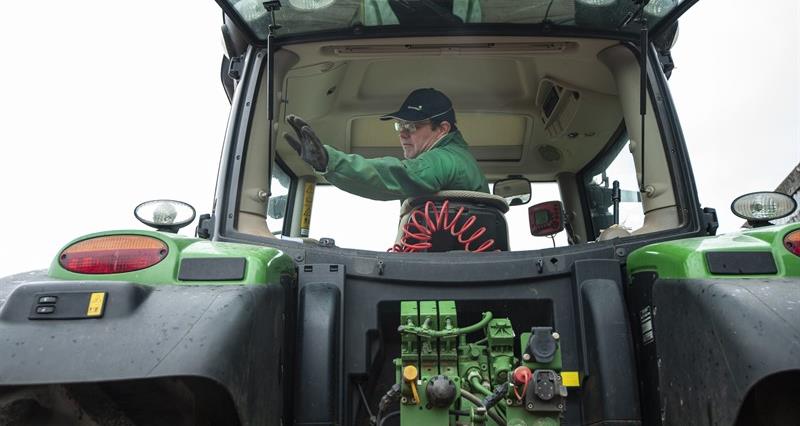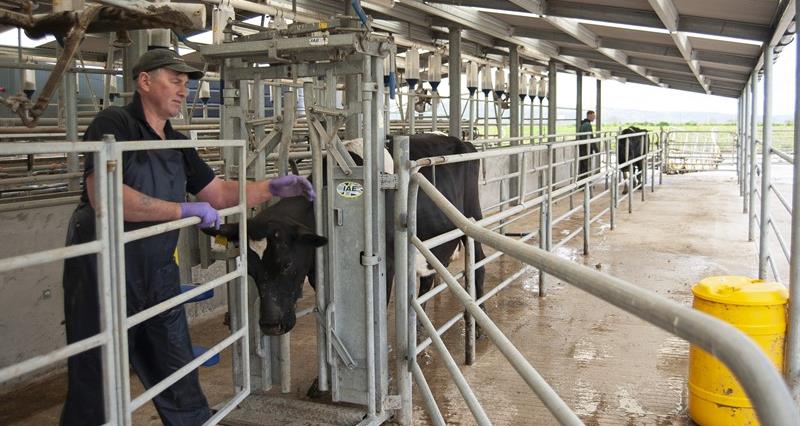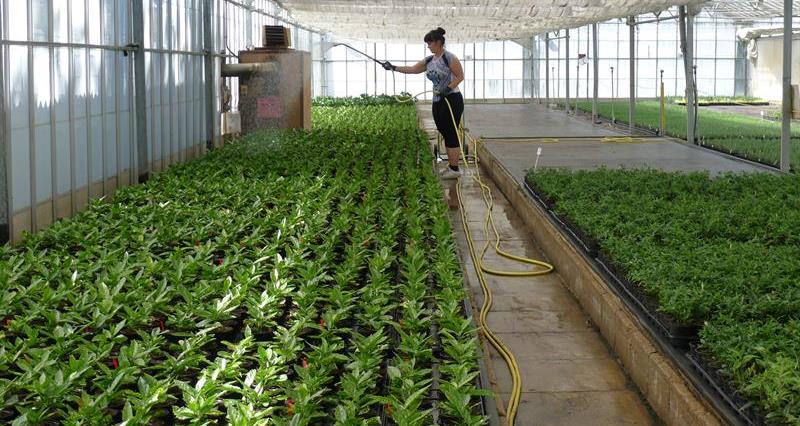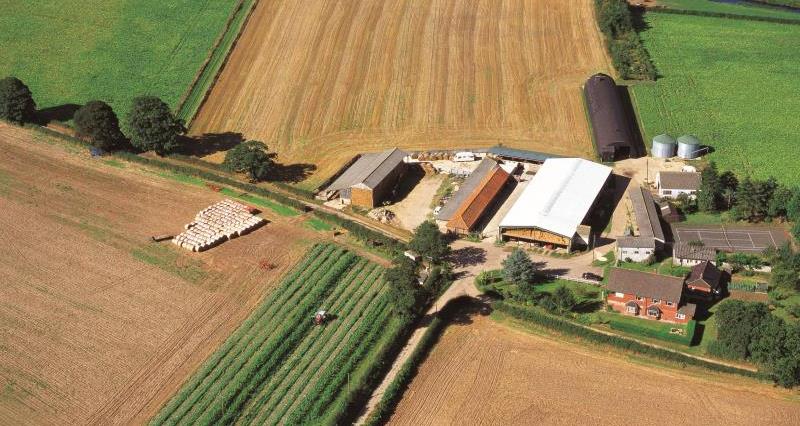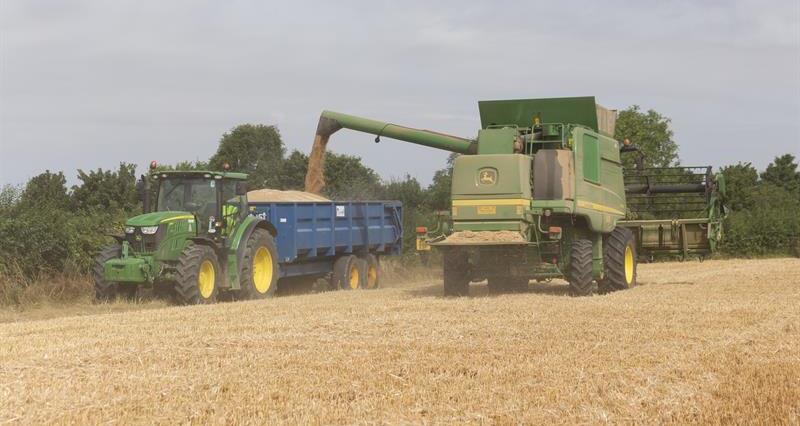There are three separate grant themes individually covering improving productivity, managing slurry and improving animal health and welfare.
There is also an increased overall budget for productivity of £70 million as well as £10.5 million for slurry and around £20 million for the animal health and welfare grant theme.
During December 2024, Defra confirmed there will not be a second or third application window for the Farming Equipment and Technology Fund 2024.
Those with an existing claim under the first window were reminded to submit their grant claims before midday on 10 January 2025, having consulted the scheme rules first to ensure a successful claim is made.
FETF 2025 round
During NFU Conference the Secretary of State announced plans for the 2025 round of the Farming Equipment and Technology Fund to be launched later this spring.
To date, the FETF has paid out £107 million to support farmers with adopting equipment and improved technologies on farm. The offer focuses on three key areas: productivity, slurry, and animal health and welfare.
£30 million has been committed to productivity and slurry, while £16.7 million will go towards animal health and welfare grants. We await details of what is included.
Grants will be capped at £25,000 across all three themes
Further guidance on the FETF 2025, including the available lists of equipment, is expected in the coming weeks.
Who is eligible?
The FETF (Farming Equipment and Technology Fund) 2024 offer was open to farmers, horticulturists, contractors, and foresters in England and included three themes:
Grant information – core features
Basis of funding – This grant offers funding to contribute to a specific list of equipment to increase productivity, boost environmental sustainability, better manage slurry and improve animal health and welfare.
Competitive grants – The FETF 24 grant is competitive and applicants may not get a grant after applying for one. The success of an application(s) is dependent on the number and value of applications the RPA received for each theme of the grant.
Each item is scored, and the average score per application is set against all the applications and the budget available to determine the threshold score and who is and isn’t successful.
Grant contributions – Grant contributions of 50% or 60% towards eligible items for successful applications are paid against either the average cost of the item listed, or the actual cost paid if an item costs less than this average.
Three funding themes and applications in one grant – Each of the following themes of this grant has a separate list of eligible items that you were able to apply for funding towards. The grant budget is split evenly across these themes.
You can only accept one grant funding agreement for each grant in 2024. If one was accepted you would not have been able to apply a second time for the same grant theme in 2024.
Within the first round of the 2024 FETF applications, there were separate application windows for the following themes:
Improving productivity
Grants for items under the improving productivity list are available for the following categories:
- arable
- forestry
- general
- horticulture
- livestock
- resource and energy management
- water and irrigation management.
The productivity offering contains 85 items, covering a variety of sectors and aims to improve your business productivity.
There were 24 new productivity items in the 2024 offer.
Each item is scored individually; for example, a direct drill (FETF45) of 6m is scored at 67 out of 100, while farmyard cameras (FETF219) have a score of 31 out of 100. Alongside this score is a percentage, usually between 50-60%, which is the proportion of grant funding available to that item.
For both the items in this example, they will be paid at a 50% rate, meaning the remaining 50% will need to be funded independently.
Slurry management
Grants for items on the slurry management list are available to farmers or contractors in the following sectors:
- Slurry collection and storage.
- Slurry testing.
- Slurry application.
There was a widened specification for slurry separators included in the 2024 offer.
Items under the slurry management theme are scored out of 100 and will be funded at a 60% rate. For example, a mobile slurry separator (FETF501) is scored at 65 out of 100 and is new for 2024.
Another option is the real time inline nutrient analysis of slurry (FETF29) which has a score of 78 out of 100. An application for these two items would score 71 out of 100 as an application.
Animal health and welfare
Grants for items on the animal health and welfare list are available to farmers or contractors in the following sectors:
- Sheep
- Pigs
- Poultry
- Cattle
The calculations for animal health and welfare items work slightly differently compared to the two other themes. This theme works by dividing the beneficial score of the chosen items, by their cost to calculate the value for money of an individual agreement.
For example, a mobile sheep handling system (FETF69) has a score of 2,030 and a grant contribution of £4,881. Giving this item a score of 0.42.
By comparison, an EID panel reader for sheep (FETF74) has a score of 1,910 and a grant contribution of £793 giving it a score of 2.4. As with both other themes, it will be important to consider the available equipment and ensure the options are suited to the needs of your farm and contribute to the grant aims.
For animal health and welfare items, the RPA and Defra recommended seeking the advice of a vet that could be used to increase the strength of your application, meaning you had a higher chance of success.
The RPA requested the vet’s details, the date of the discussion and permission to contact them.
The advice needed to have related to your application and must have been received after 1 January 2024, but before 1 January 2025. The advice could have been received in several ways, including by phone, email, or as part of a vet visit.
This increased an application’s value by 20%.
Key deadlines
Applying
- The first application window for productivity and slurry items has now closed.
- The first application window for animal health and welfare has now closed.
A grant application cannot be changed after it has been submitted. If you need to withdraw an application you will not be able to submit another.
When the application window was open, there was also a new Farming Investment Fund application service to make it easier to apply for FETF grants. You would have needed to register for the service to apply.
Acceptance of GFA (Grant Funding Agreement) offer
If you were successful, you will have used the Farming Investment Fund service to accept your GFA by 8 July 2024. It was important to note the information down around what happens if you accepted the GFA for an application made during the first application window.
Claim deadline
For those who were successful, the deadline for submitting your FETF 2024 grant claim form was midday on 10 January 2025.
How much money is available under the grant?
The FETF 2024 grants are for a minimum of £1,000 and a maximum of between £25,000 for the animal health and welfare theme and £50,000 for the productivity and slurry themes. Applicants who wanted to apply for a grant greater than £25,000 would have needed to have provided further information to the RPA.
If you were successful and received funding in FETF 2023 you were still able to apply for FETF 2024. The minimum and maximum grant levels apply to 2024 only.
Applicants were able to apply for any theme or all three, for any of the eligible items that best suit your business.
Where a claim for an individual grant is more than £25,000, the RPA requested additional information to support your application. This included either:
-
financial accounts for the most recent 3 years of trading
-
latest tax returns, management accounts or a statement of income and expenses from an accountant (if you are a new business or self-employed).
The RPA will also need proof of your ability to match funding to cover the balance of the item costs for the grant.
The RPA assessed the following:
- the current financial viability of your business
- how you will fund the items until the grant is claimed.
In acknowledgement of possible supply issues, you may have been able to reserve an item for a refundable deposit as part of the grant. This was subject to additional specific requirements. Failure to meet those requirements could have resulted in your claim being rejected.
The deposit must have been:
- for no more than 50% of the items’ cost
- it must be clearly marked by your supplier on your invoices to show that a refundable deposit was used to purchase the item
- the deposit must not have been put down before 20 February 2024.
Eligible items
There are 232 eligible items of equipment available under FETF 2024 split across:
- 17 items of slurry equipment.
- 85 items of equipment for improving productivity.
- 130 items to promote animal health and welfare.
Items must be paid for in full before a claim can be made. All grant purchases must be through a supplier of manufacturer; these cannot be linked to your business, and they cannot be home built equipment.
Grants are awarded through the FETF based on the overall score of your application per grant.
These scores can be found on the individual annexes for each theme below:
- GOV.UK | Productivity items and specifications
- GOV.UK | Slurry items and specifications
- GOV.UK | Animal health and welfare items and specifications
As with previous schemes, where a theme is oversubscribed, the RPA will allocate funding to those items (or the average for a combination of items) applied for with the highest score first.
This information was requested after the over-subscription for round 1 to help farmers understand why they were unsuccessful.
Which items are not eligible?
If the equipment you want is not listed, or does not meet the minimum specification, it is not eligible for this grant.
Only brand-new items can be funded through the FETF. Ex-demo, second hand and ‘try before you buy’ items are not eligible for this grant. Part exchange, hire purchase or lease items are not available under this grant.
It is important to read the FETF 24 specifications carefully, some may have changed since FETF 23 as the entire grant offering has been reviewed.
Successful applications
If you have accepted one or more GFAs under the FETF 2024, the RPA provided detailed guidance on how to make a successful claim: GOV.UK | Claim your Farming Equipment and Technology Fund 2024 grant payment.
Each GFA needed a separate claim to be submitted; an individual with two or more agreements in place would have needed to have submitted one claim for each GFA.
All the items in your GFA should have been included in your claim. You could only submit one claim per grant. The RPA pays each grant in separate payments.
The RPA only pays for:
- eligible items in your GFA, which may not be all the items included in your application,
- items that you’ve bought after you receive your GFA (unless you’re using a refundable deposit).
Changing your GFA
If you wanted to change an item in your GFA, for example to a similar item or higher specification, you must contact the RPA.
The RPA cannot consider requests to add additional items.
If an item is not available
If you wanted to change or remove an item because it wasn’t available, your application must still have been within the minimum and maximum grant values set out above and the revised total score must still be more than the minimum threshold.
Email FETFClaims@rpa.gov.uk before the claim deadline and include:
- the make, model and quantity of each item, and
- email evidence to show which suppliers you’ve tried to source the item from.
How to claim
Follow the steps below set out by the RPA to help you submit your claim for payment. The RPA will confirm how long you have to buy your items and submit your claim in your GFA document.
- Pay for the items in full – contact the RPA if you cannot buy an item that’s in your GFA.
- Keep all invoices and bank statements for the items you buy.
- When you receive the items, complete the claim form in your GFA and email it to FETFClaims@rpa.gov.uk by midday 10 January 2025. Send supporting evidence with your form (you must submit a separate claim and evidence for each grant you’re applying for).
You’ll receive an email confirmation that your claim has been submitted. If you do not receive an email acknowledging receipt of your claim, contact the RPA for help.
Submit evidence with your claim
Submit the following evidence to FETFClaims@rpa.gov.uk with a completed claim form for each grant you’ve applied for:
- Copies of invoices for items you buy.
- Copies of your business bank, building society or business credit card statements which shows the items have been paid in full.
- Photographic evidence of each item.
The RPA may reject all or part of your claim if you do not submit the correct evidence.
The RPA cannot accept evidence sent using secure data transfer sites on the internet (for example OneDrive, Dropbox, Google Drive or Apple iCloud).
The guidance sets out in detail what must be contained on the invoice; payment evidence is needed (and what is not acceptable, such as cash or your personal account / lease or hire purchase or part exchange), and the quality of photographic images expected.
Withdraw a claim
You can withdraw your claim at any time. If you want to withdraw your claim, email FETFClaims@rpa.gov.uk as soon as possible with your reasons. Include your FETF reference number. Your GFA will then be withdrawn.
When you’ll be paid
While the original intention was for the RPA to aim to pay submitted claims within 30 working days of submission, in the final two weeks of the claim window the RPA received 35% of all outstanding claims.
Due to such a significant number of claims coming in near the deadline, the RPA has acknowledged that payments will take a little longer to process,
The new RPA target to clear all payments is 20 June 2025. That does not mean all payments will be waiting to be paid until then, but it does mean some claimants may be waiting a little longer than the original 30 working day timeline proposed by the RPA.
Payments are made to the bank or building society account attached to your business’ main SBI (Single Business Identifier) number in the Rural Payments service. The RPA will send you a remittance advice when you’ve been paid.
After you’ve been paid
The RPA may recover some, or all of your payment if you do not meet the following conditions for 5 years from the date your claim was paid.
You must:
- Keep grant funded items at the location stated in your GFA.
- Keep items operational and in good repair.
- Use items for the same purpose as set out in your application.
If there’s a change in circumstances which could affect your rights and obligations under the GFA, you must tell RPA as soon as possible.
You must keep paperwork associated with your GFA for seven years from the date your claim was paid.
